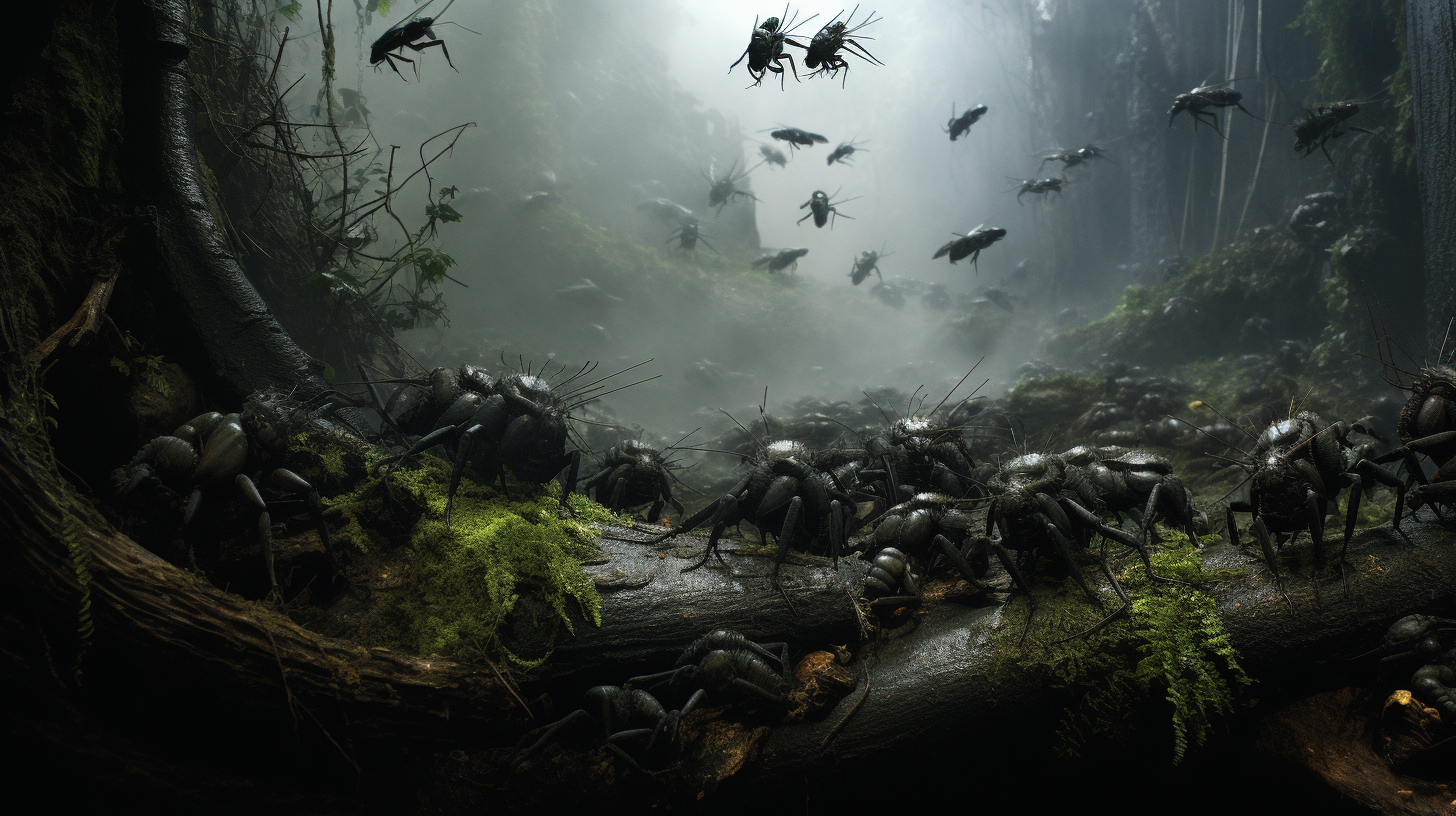In the cracked wastelands of our forgotten suburbs and the steel skeletons of once-bustling metropolises, a new era has arisen—an era where miniature beasts of the wild have clambered onto the throne of dominion left vacant by humanity’s downfall. Rising to fill the void, these hardy creatures weave through the detritus of human negligence, morphing into the unlikeliest of Erdbeben (earth-shakers)—the insects.
Driven by insatiable appetites, hordes of cockroaches parade through the skeletal remains of urban centers, their glossy carapaces mirroring the polluted sunsets. Winged ants take flight en masse, a phenomenon resembling the dark and ominous clouds that perennially loom overhead, signaling an impending storm of life rather than rain.
In the remote wilderness, where once the pristine chatters of woodland creatures reverberated, there now hums a different tune. Swarms of locusts, reminiscent of historic plagues, churn through vegetation in a symphony of destruction and reclamation. Various arthropods, mutated and magnified, have become the stuff of entomologist dreams—or for the faint-hearted, nightmares.
The new food web is intricate and bewildering, with insects at its core. Spiders, those grim dancers of death, cast their intricate silken webs across windows and walls, crafting macabre artworks that glimmer with the dew of a toxic fog. They hunt with an eerie precision that equals, if not outstrips, the architectural ingenuity expressed by our previous article on nature’s micro-architects.
Amidst this reinvention of the urban landscape lies a paradoxical beauty. Wildflowers, untended and untainted by human hands, erupt in pockets of color amidst the rubble, fertilized by the very insects that now rule. Bees, adapting to the new environs, have transfigured high-rises into hives—their buzz a mechanical mimicry of the city’s erstwhile hustle.
The disappearance of once-flourishing butterflies, as lamented in ‘Echoes of Extinction,’ stands in stark contrast to this thriving insectoid domain. These delicate beings, with wildly painted wings that once served as nature’s canvases, now seem like tombstones memorializing a diverse past. Yet, in their demise, other insects have surged forth, eager to exploit the vacuum left behind.
One can’t help but marvel at the adaptability of these new titans. The cockroach, notoriously indestructible, has grown robust in the wasteland, its lineage tracing back to a time before our concrete jungles. The detritivores scuttle amongst the decay, breaking down the remnants of a consumerist society. The silver linings in these harbingers of biological resilience illuminate an Earth unconquered.
As poignant as the insects’ tale is, the message they carry resonates deeper than the hollow buzz of their collective presence. The warning is clear: adapt or perish. They have usurped humanity’s ecological throne not out of ambition, but out of necessity and opportunity. Our own extinction whispers in the shadows of their minuscule triumphs, a tale of evolution’s impartial eye and the inescapable judgment of natural selection.
One can only speculate about the future chapters of these New Titans of the Wild. Will their reign persist, or might they, too, face an unstoppable tide of change? For now, they climb, they build, and they colonize—the undefined masters of a world reshaped by human hands, then abandoned, leaving only the hardiest survivors to tell the tale.
